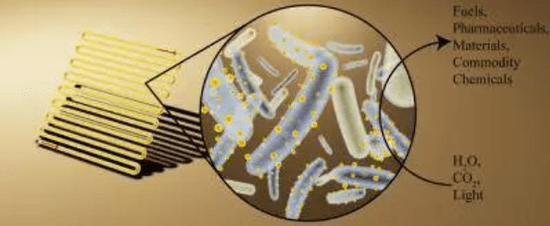
At the recent 254th National Chemical Society National Conference & Expo, the Kelsey K. Sakimoto team from Lawrence Berkeley Labs in the United States proposed a new type of miniature solar panel, a hybrid system of bacteria. The system utilizes cadmium sulfide (CdS) nanoparticles to transform non-photosynthetic bacteria Moorella thermoacetica. The surface of the solar panel is composed of cadmium sulfide nanoparticles that can capture solar photons. Photoexcited cadmium sulfide CdS can produce photogenerated electron-hole pairs. And used to participate in chemical reactions in artificial photosynthesis.

Sakimoto? said: "Once these tiny solar panels are 'installed' with these bacteria, bacteria can all use solar energy to produce food, fuel and plastic." So why do you need a medium like solar panels? Because only photovoltaic cells can convert all sunlight into a stream of electrons, natural photosynthesis simply transforms it into the food needed for plant growth.
Figure 丨 bacterial modified CdS bioreactor (left); light-absorbing nanocrystals (middle) convert sunlight, carbon dioxide, water into useful chemicals (right)
They then stated that the CdS-Moorella thermocatica system can use light to reduce carbon dioxide to acetic acid. Acetic acid is a versatile chemical that can be used to make polymers, pharmaceuticals, and liquid fuels, and 5-20% of the vinegar in the kitchen is made up of acetic acid. The Sakimoto team is also working to convert carbon dioxide into other chemical fuels such as methanol, liquid hydrogen and other liquid fuels.
Sakimoto? said: "Once these tiny solar panels are 'installed' with these bacteria, bacteria can all use solar energy to produce food, fuel and plastic." So why do you need a medium like solar panels? Because only photovoltaic cells can convert all sunlight into a stream of electrons, natural photosynthesis simply transforms it into the food needed for plant growth.

2025 Guangzhou International Lighting Exhibition
Time:June 9 - 12, 2025
Booth No:8.1 - B55
Welcome to visit our booth!

